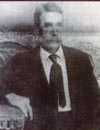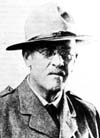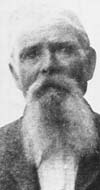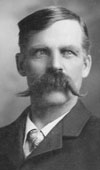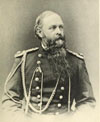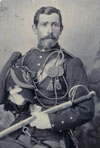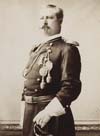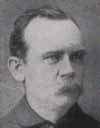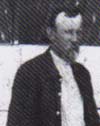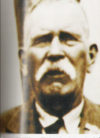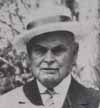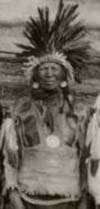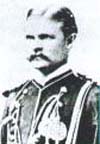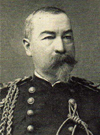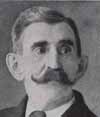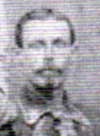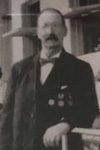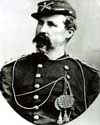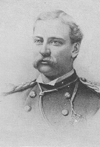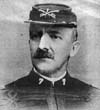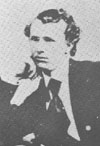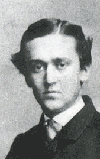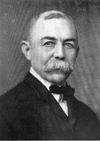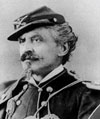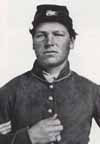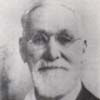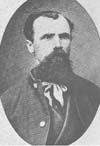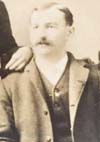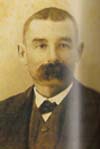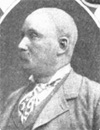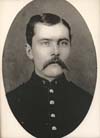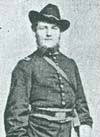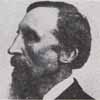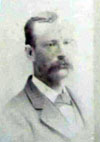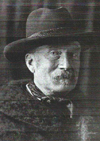Daniel Shea died on July 24, 1882, in Little Rock, Arkansas, and was buried in the Little Rock National Cemetery. He was a Private in Company B who was with the pack train and in the hilltop fight during the Battle of the Little Bighorn.
Ernst Meineke died in at the Soldiers’ Home in Washington, D.C., on July 24, 1907, and was buried in the National Cemetery there. He was a Private in Company F who was not present due to detached service at Fort Lincoln, caring for the company property and garden.
Richard A. Wallace drowned on July 25, 1876, near the mouth of the Bighorn River in Montana Territory while attempting to cross the river for picket duty. He was eventually interred in the mass grave on Last Stand Hill. He was a Private with Company B who was with the pack train and participated in the hilltop fight during the battle.
Thomas James Stowers (left) died in Baxter, Tennessee, on July 25, 1933, and was buried in the Odd Fellows Cemetery near Baxter. He was a Private with Company B who was with the pack train and participated in the hilltop fight.
Theodore W. Goldin (left) was born on July 25, 1858, in Avon Township, Wisconsin. He was a Private with Company G who participated in the valley and hilltop fights. He was awarded the Medal of Honor for his heroic actions during the battle.
August B. Siefert was born in Darmstadt, Germany, on July 26, 1850. He was a Private with Company K who was with the pack train and participated in the hilltop fight during the battle.
Henry Edward Haack died on July 27, 1881, at the Asylum for the Insane in Washington, D.C., and was buried in St. Elizabeth’s Hospital East Cemetery in the Anacostia district of the city. He was a Private with Company H who participated in the hilltop fight.
Aloys Bohner died in Burlington, Des Moines County, Iowa, on July 27, 1887, and was buried in Aspen Grove Cemetery in Burlington. He was a Trumpeter with Company D who participated in the hilltop fight.
John J. “Jack” Mahoney (left) died on July 27, 1918, in Sturgis, South Dakota, and was buried in the St. Aloysius Cemetery there. He was a Private with Company C who was with the pack train and participated in the hilltop fight.
Lansing A. Moore (right) died in Rawlins, Wyoming, on July 27, 1931, and was buried in the Rawlins Cemetery there. He was a Private with Company F who was with the pack train and participated in the hilltop fight.
William Gibbs was born on July 28, 1845, in Manchester, England. He was a Private with Company K who participated in the hilltop fight.
Morris Mason Farrar was born on July 30, 1846, in Amesbury, Massachusetts. He was a Private in Company E who participated in the hilltop fight.
